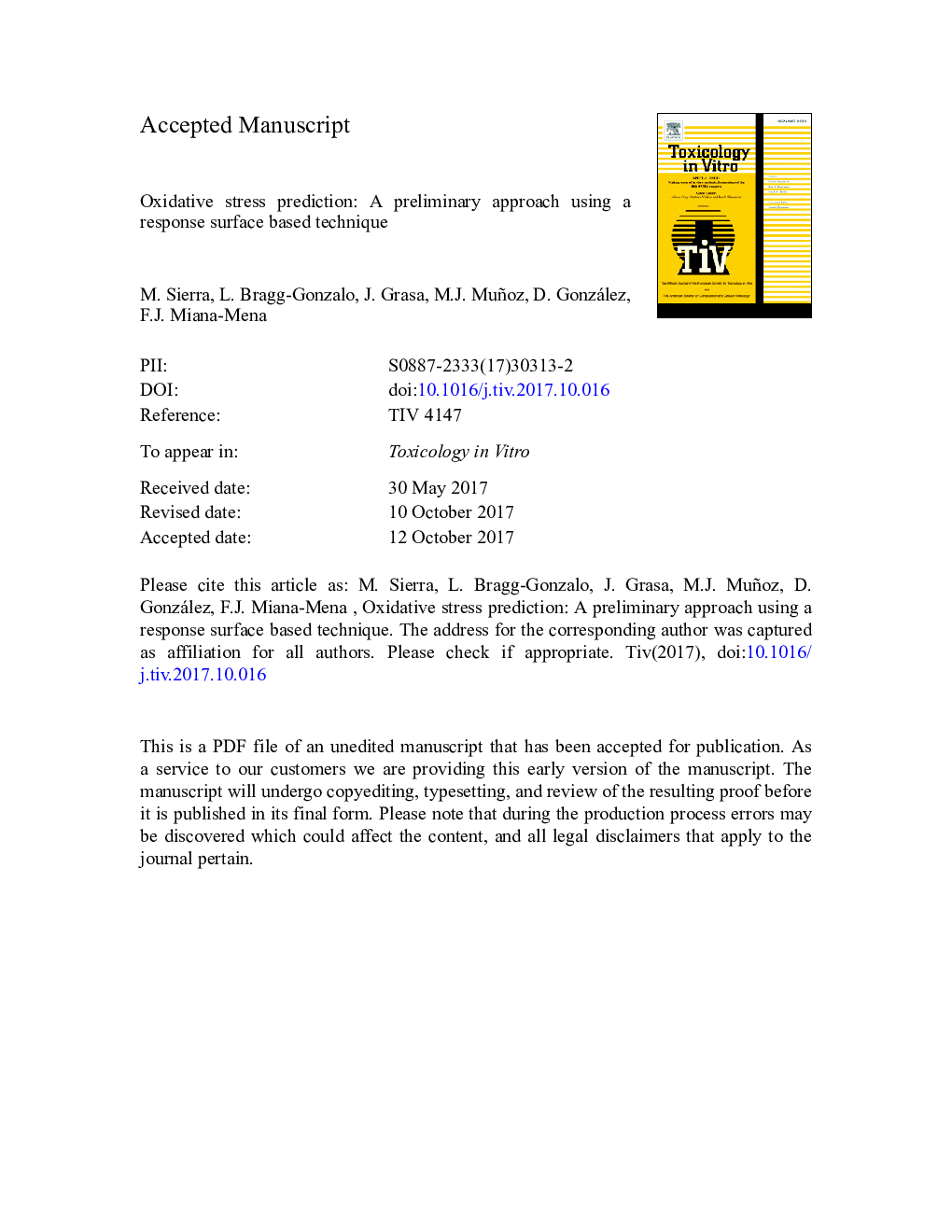| Article ID | Journal | Published Year | Pages | File Type |
|---|---|---|---|---|
| 8554178 | Toxicology in Vitro | 2018 | 36 Pages |
Abstract
A response surface was built to predict the lipid peroxidation level, generated in an iron-ascorbate in vitro model, of any organ, which is correlated with the oxidative stress injury in biological membranes. Oxidative stress studies are numerous, usually performed on laboratory animals. However, ethical concerns require validated methods to reduce the use of laboratory animals. The response surface described here is a validated method to replace animals. Tissue samples of rabbit liver, kidney, heart, skeletal muscle and brain were oxidized with different concentrations of FeCl3 (0.1 to 8 mM) and ascorbate (0.1 mM), during different periods of time (0 to 90 min) at 37 °C. Experimental data obtained, with lipid content and antioxidant activity of each organ, allowed constructing a multidimensional surface capable of predicting, by interpolation, the lipid peroxidation level of any organ defined by its antioxidant activity and fat content, when exposed to different oxidant conditions. To check the predictive potential of the technique, two more experiments were carried out. First, in vitro oxidation data from lung tissue were collected. Second, the antioxidant capacity of kidney homogenates was modified by adding melatonin. Then, the response surface generated could predict lipid peroxidation levels produced in these new situations. The potential of this technique could be reinforced using collaborative databases to reduce the number of animals in experimental procedures.
Related Topics
Life Sciences
Environmental Science
Health, Toxicology and Mutagenesis
Authors
M. Sierra, L. Bragg-Gonzalo, J. Grasa, M.J. Muñoz, D. González, F.J. Miana-Mena,
